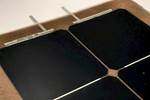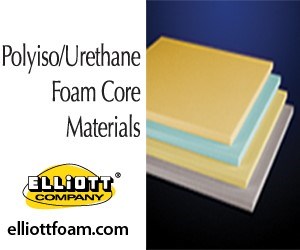LIT Rapid Solar system enhances composite photovoltaic panel assembly potential
Induction-heated thermocompression press developed collaboratively by Roctool and CEA-Liten has verified improvement in temperature and pressure conditions, opening up new opportunities.
Assembly equipment LIT Rapid Solar, developed in partnership with Roctool. Source CEA Laurence Godard
Roctool (Le Bourget du Lac, France) has strengthened its partnership with CEA-Liten (Grenoble, France), a company that develops lightweight composite photovoltaic panels for various applications, including solar mobility. CEA-Liten’s laboratories, on the INES site, have been equipped with a thermocompression press featuring an induction heating system. This equipment, LIT Rapid Solar, developed in partnership with Roctool, is reported to offer new and promising features, achieving temperature and pressure conditions that open up new possibilities for photovoltaic module materials.
According to Roctool, LIT Rapid Solar makes it possible to work at much higher temperatures than the lamination equipment normally used for assembling photovoltaic panels — up to 260°C, compared with 180°C. It also ensures cooling in the same chamber, without breaking the applied pressure (applied pressure >6 bar, compared to 1 bar). These temperature and pressure conditions enable the use of novel thermoplastic polymer materials and polymer-matrix composites for the encapsulation step in the module assembly, which in turn could provide opportunities in new sectors and, in particular, facilitate the recycling of these photovoltaic modules.
In addition, the tooling is interchangeable according to the needs of the application. It can be used to achieve flat formats, as well as curved or complex 3D shapes.
Two photovoltaic panels, one made using a standard process, and the other using the LIT Rapid Solar process, passed 100 thermal cycles (-40°C to +85°C) and were tested under high humidity conditions (85°C and 85% relative humidity). Tests have shown that the two modules have equivalent performance, enabling this new process to be pre-qualified in a photovoltaic panel assembly environment.
Related Content
-
Guidance for the thermoforming process
A briefing on some of the common foam core material types, forming methods and tooling requirements.
-
Improving carbon fiber SMC simulation for aerospace parts
Simutence and Engenuity demonstrate a virtual process chain enabling evaluation of process-induced fiber orientations for improved structural simulation and failure load prediction of a composite wing rib.
-
SMC composites progress BinC solar electric vehicles
In an interview with one of Aptera’s co-founders, CW sheds light on the inspiration behind the crowd-funded solar electric vehicle, its body in carbon (BinC) and how composite materials are playing a role in its design.














